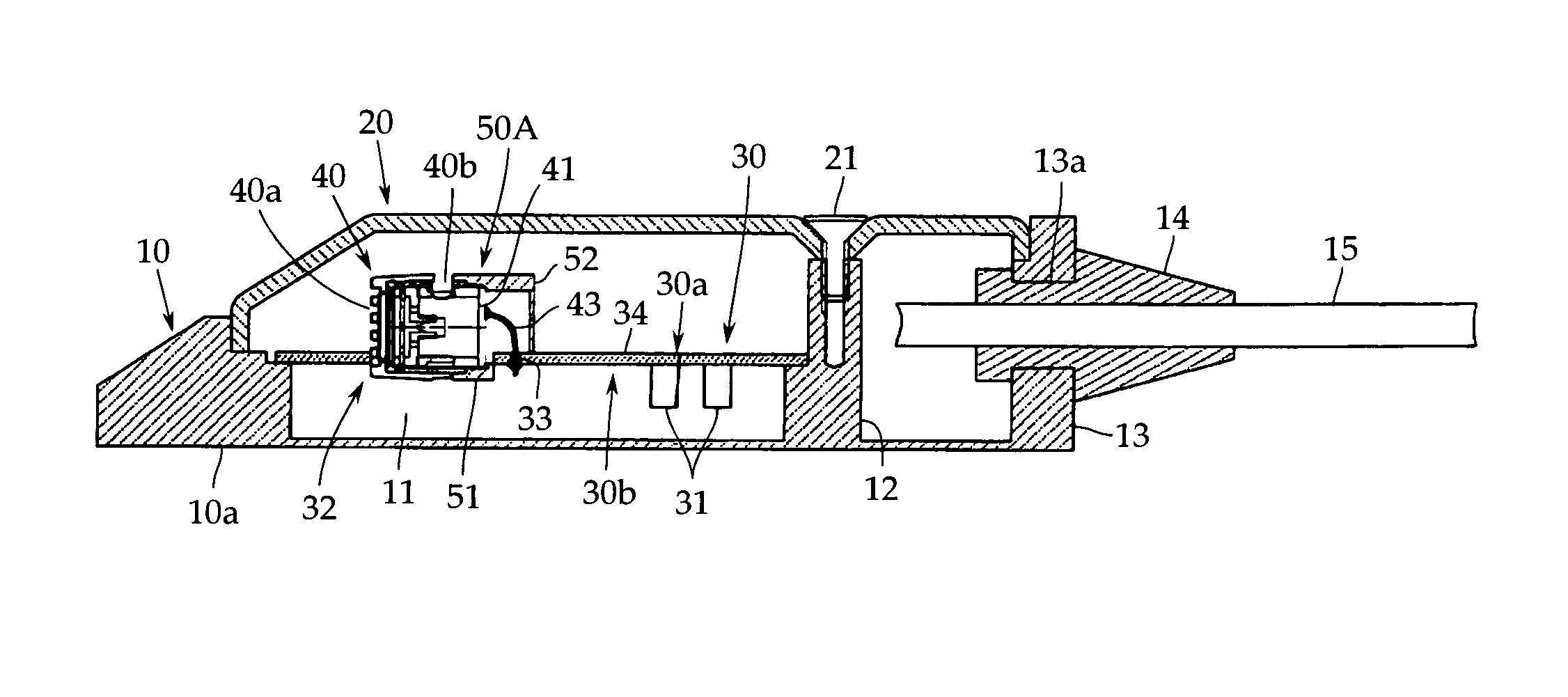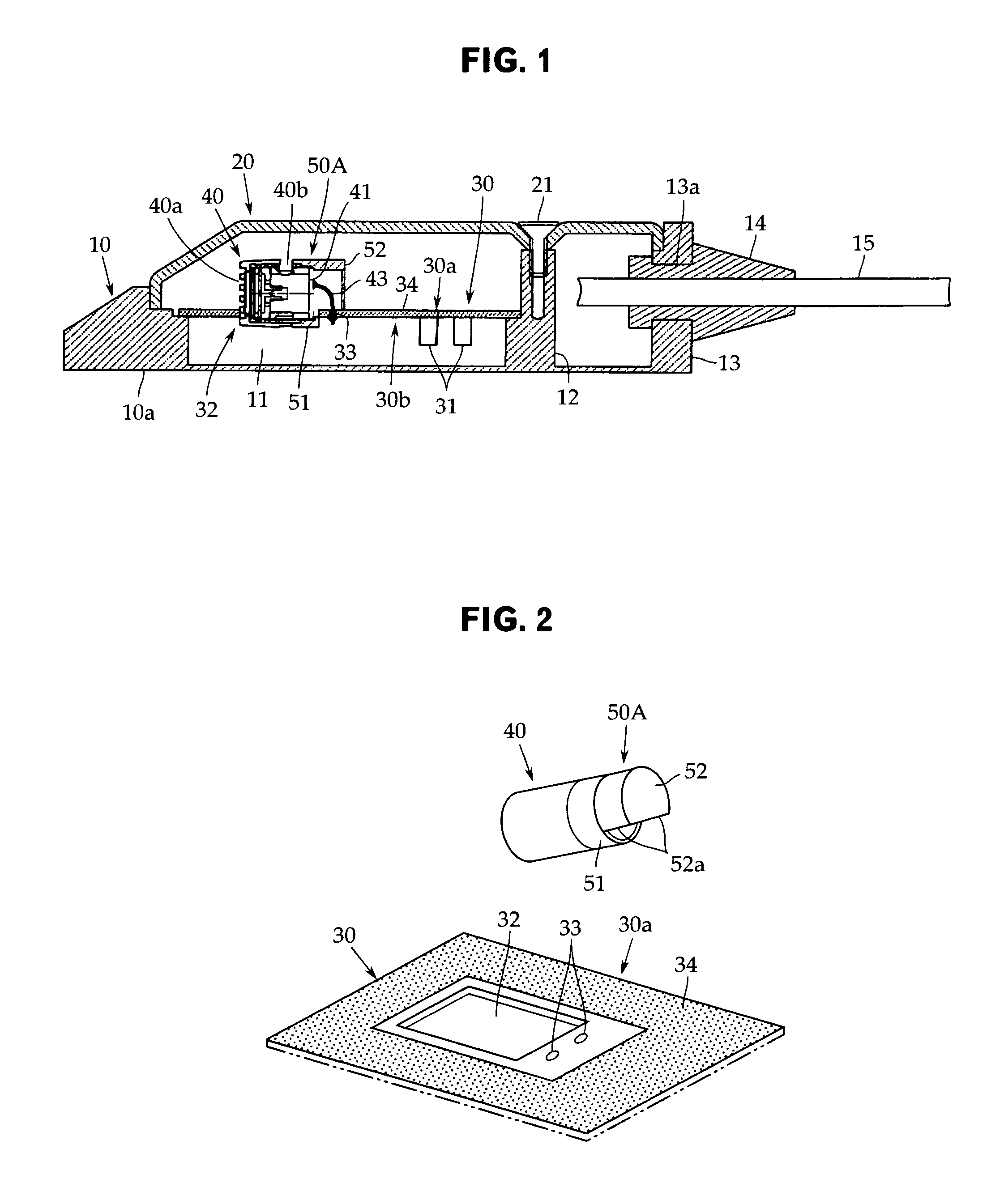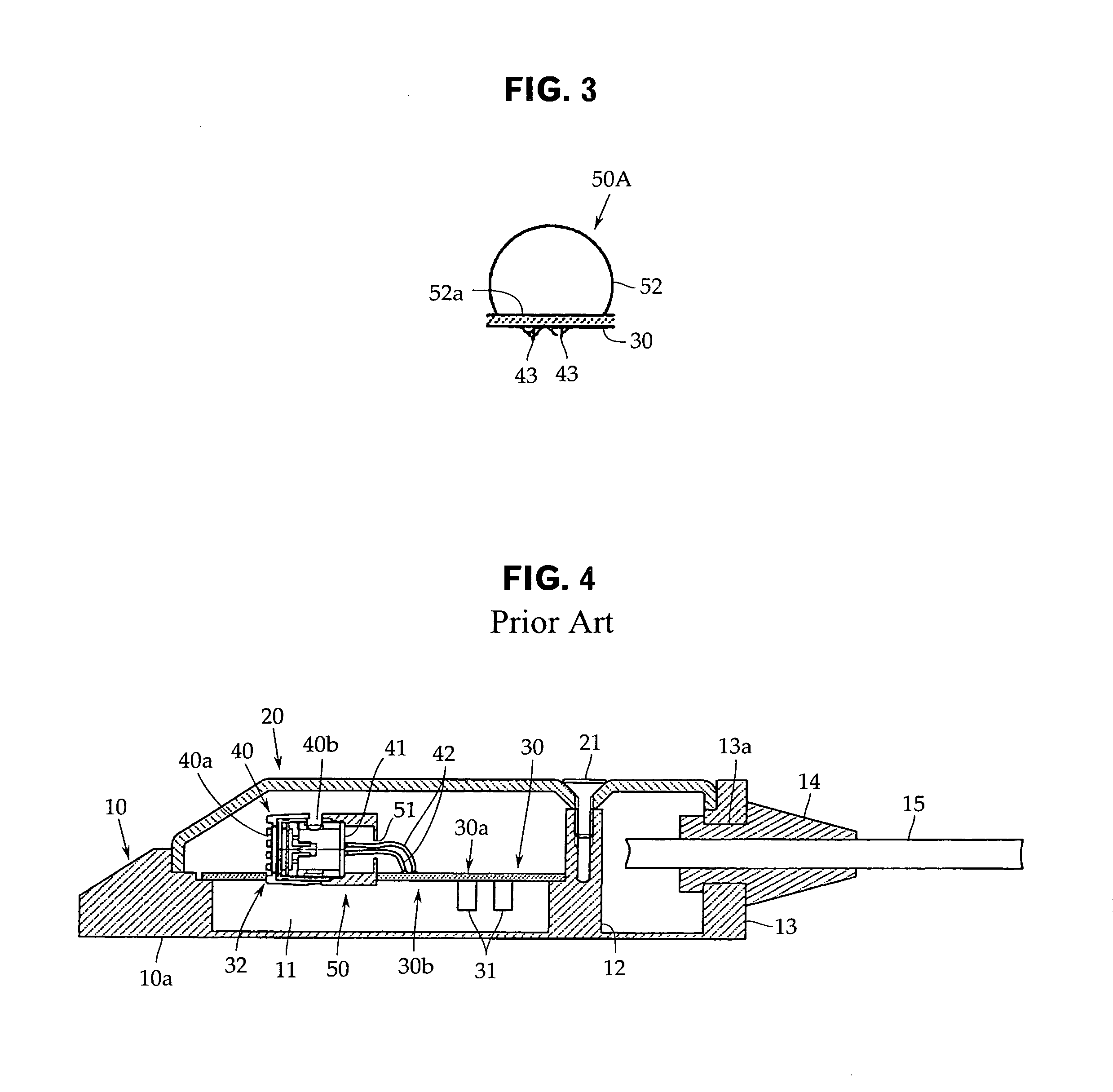Boundary microphone
a microphone and boundary technology, applied in the field of boundary microphones, can solve the problems of insufficient electrostatic shielding against considerably strong electromagnetic waves radiated from mobile phones, remain some problems to be solved, and difficult to uniformly maintain, so as to achieve the effect of facilitating uniform wiring shapes
- Summary
- Abstract
- Description
- Claims
- Application Information
AI Technical Summary
Benefits of technology
Problems solved by technology
Method used
Image
Examples
Embodiment Construction
[0026]An embodiment of the invention will now be described with reference to FIGS. 1 to 3, although the present invention is not limited to the embodiment. In the description of the embodiment, like reference numerals are used to denote any components that do not require changes from the prior art in FIG. 4 as described above.
[0027]As shown in FIG. 1, a boundary microphone according to the embodiment also includes a base plate 10 and a cover 20 closing the base plate 10, similarly to the prior art as described above.
[0028]The base plate 10, whose base surface 10a is formed flat so that the base plate 10 can be placed stably on a table top or a floor, includes a recess 11 for mounting a circuit board and a column 12 for connecting the cover on the upper surface side, and is provided with a backwall 13 that has a microphone cable drawing hole 13a in the rear. The base plate 10 may as a whole be made of die-cast aluminum, for example.
[0029]A punched plate (perforated metal) or a wire m...
PUM
 Login to View More
Login to View More Abstract
Description
Claims
Application Information
 Login to View More
Login to View More - R&D
- Intellectual Property
- Life Sciences
- Materials
- Tech Scout
- Unparalleled Data Quality
- Higher Quality Content
- 60% Fewer Hallucinations
Browse by: Latest US Patents, China's latest patents, Technical Efficacy Thesaurus, Application Domain, Technology Topic, Popular Technical Reports.
© 2025 PatSnap. All rights reserved.Legal|Privacy policy|Modern Slavery Act Transparency Statement|Sitemap|About US| Contact US: help@patsnap.com



